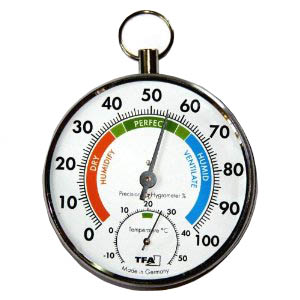Contents
Preventing Condensation – How to Cure It
Water pulled out of thin air can do serious damage
Every home has some condensation somewhere, sometime. And most of it is harmless. But in heavy doses, those little droplets of water can add up to real damage. Here are the main trouble spots:
What is condensation?
When warm, humid air contacts a cold surface, water vapor in the air becomes liquid, forming droplets on the surface.
Windows
In winter, windows are the coldest surface in your home, so that’s where condensation is usually worst. Light, occasional condensation isn’t a big problem, but heavy, continuous condensation damages windows and trim, leading to peeling paint or varnish, stains and rot. Worse, water can seep into walls, causing rot and mold. Aside from lowering indoor humidity, the only real cure is new windows that insulate better and stay warmer.
Basements
Warm, humid summer air reaching cold basement walls and floors is the perfect recipe for condensation. The result is mold, mildew and musty odors. You might be tempted to air out a dank basement by opening windows, but that often makes the problem worse by boosting the supply of humid air. Finishing a basement with well-insulated walls and floors greatly reduces condensation. A quicker, easier solution is to run a dehumidifier.
Toilets
After a flush, the tank refills with cold water and the tank can “sweat” and drip, causing flooring damage and wood rot. This condensation sometimes tricks homeowners (and even plumbers) into searching for a toilet leak. One cure for tank condensation is an insulated tank; some new toilets offer that option, and insulating kits for existing toilets are also available. Another solution is to install a tempering valve, which feeds a mix of hot and cold water into the tank.
Walls
Like any other cold surface, walls can gather moisture. Condensation on walls is usually light, more like fog on a mirror than large droplets on a window. But that light moisture can gather dirt and support mildew growth. Since wood is a poor insulator, you may see stripes of dirt and mildew that show the framing behind the drywall, an effect called “ghosting.” Condensation on walls may also reveal poorly insulated areas. Aside from upgrading insulation, air movement can reduce condensation on walls. Running a ceiling fan or leaving closet doors open, for example, can reduce condensation by circulating warm air and raising the temperature of walls. Moving air also quickly dries any condensation that does occur.
Lower the humidity
Condensation requires cold surfaces and humid air. So there are two ways to prevent it: Raise the temperature of surfaces or lower the humidity. Raising temperatures is sometimes expensive, difficult or both. But there are simple ways to cut humidity:
- Exhaust fans
Cooking and bathing pump a lot of water into the air. But the solution is as easy as flipping a switch. Run kitchen and bath exhaust fans for 15 to 30 minutes after a shower or pot of spaghetti.
- Dehumidifier
It will raise your electric bill by a few bucks, but a dehumidifier is one of the easiest and best ways to fight condensation.
- Air conditioner
Air conditioning doesn’t just cool the air—it also dries it. So you might solve summertime condensation problems by using your AC more often.
- Dryer vents
The vent pipe carries all the moisture removed from your laundry outdoors. Make sure it’s sealed tight at joints and blows air outdoors.
- Furnace settings
Some furnaces have a built-in humidifier that adds a little moisture to dry winter air. But if the setting is too high, it can cause condensation troubles. Check the manual or call in a pro.
